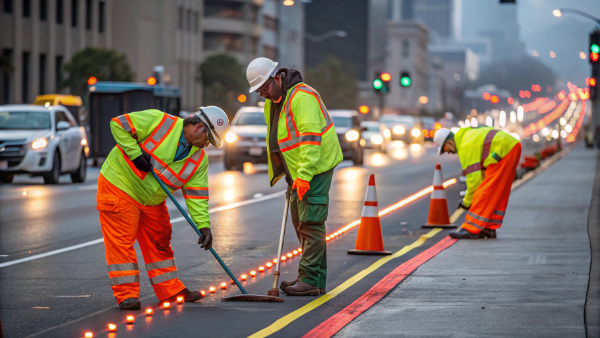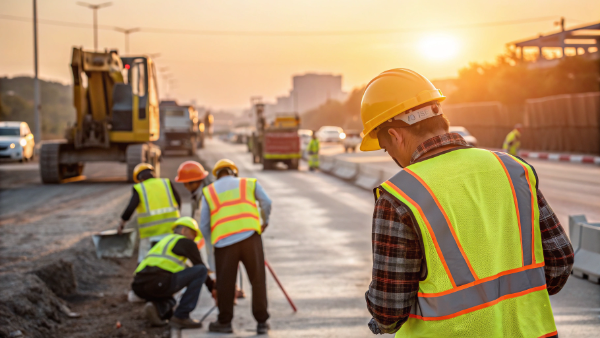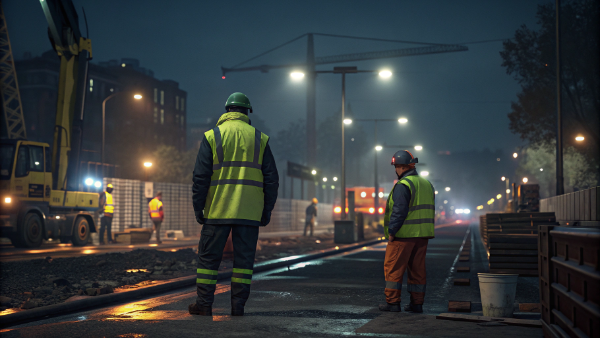New riders often struggle with jacket choices. A wrong pick means discomfort, less safety. This guide simplifies selecting your first, perfect riding jacket.
Choose a snug-fitting jacket with room for movement, suited to your bike type and weather, prioritizing safety features. Consider materials like leather or textile for essential protection and durability on your rides.
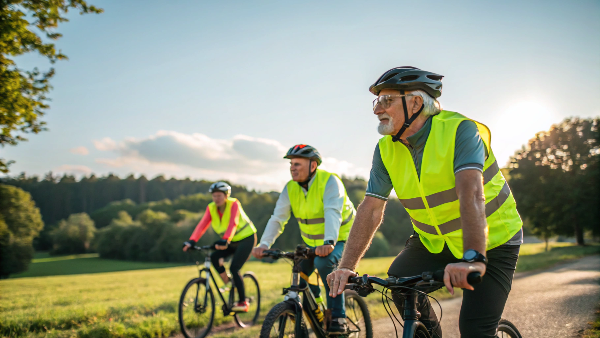
Now you have a basic idea of what to look for. But choosing the right riding jacket is a really important step for any new motorcyclist. It's not just about looking the part; it’s about your safety and comfort every time you head out. We will break down everything you need to consider, so you can feel confident in your decision and enjoy your rides even more. Let's dive into the specifics to help you find the ideal jacket.
How to choose a riding jacket?
Feeling overwhelmed by all the jacket options out there? It is tough knowing where to start. We will guide you through the key factors for a confident choice.
Consider material (leather, textile, mesh), protection (CE-rated armor1), overall fit, weather suitability (waterproofing2, ventilation), and visibility. Prioritize safety features meeting recognized standards for impact and abrasion resistance.
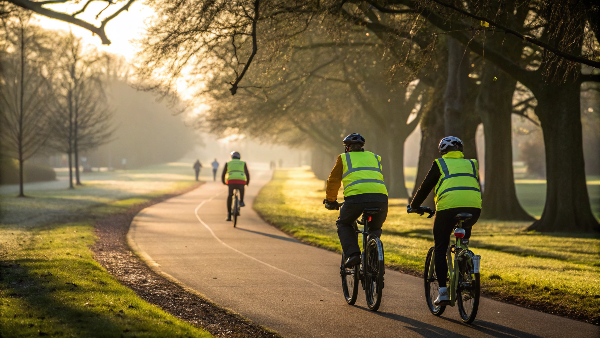
Choosing a riding jacket involves looking at a few key things. It's about finding the right balance for your needs. I've learned a lot about protective materials from my work at Vissafetywear, and these principles apply to riding gear too.
Material Matters
The material of your jacket is your first line of defense.
- Leather: This is the classic choice. It offers excellent abrasion resistance3. Leather can be warm, which is great for cooler weather but might be too hot in summer unless it has good ventilation. It also molds to your body over time.
- Textile: Materials like Cordura, Kevlar, or other advanced synthetic fabrics are very versatile. They often come with built-in waterproof and breathable membranes. Textile jackets can offer abrasion resistance comparable to leather, but are often lighter and more flexible from the start.
- Mesh: For hot weather riding, mesh jackets are a great option. They provide maximum airflow to keep you cool. While they offer impact protection with armor, their abrasion resistance might be less than solid textile or leather, so look for reinforced panels in key impact zones.
Protection and Armor
This is a non-negotiable aspect.
- CE-rated Armor: Look for jackets with armor in the shoulders and elbows. It should be CE-rated (Conformité Européenne), which means it meets European safety standards. You'll see CE Level 1 or CE Level 2. Level 2 offers more protection.
- Back Protector: Many jackets come with a pocket for a back protector, but the protector itself is often sold separately. I highly recommend getting one. It's a critical piece of safety gear.
- Abrasion Resistance: The outer shell of the jacket needs to withstand sliding on pavement. Check the material specifications.
Weather Considerations
You’ll likely ride in different conditions.
- Waterproofing: If you plan to ride in the rain, look for a waterproof jacket. Some have removable waterproof liners, while others have the membrane bonded to the outer shell. Breathable membranes like Gore-Tex help prevent you from getting sweaty.
- Ventilation: For warm weather, good ventilation is key. Look for zippered vents on the chest, arms, and back.
- Thermal Liners: For cold weather, a removable thermal liner can make a big difference in comfort. This versatility means you can use one jacket for multiple seasons.
What is the best motorcycle jacket for a beginner?
New to riding and unsure about the "best" jacket? Don't let confusion stall your gear hunt. Let's find what suits a beginner perfectly.
The best beginner jacket offers a balance of CE-rated armor, comfort, versatility for different weather conditions, and good visibility4, all within a reasonable budget for new riders.
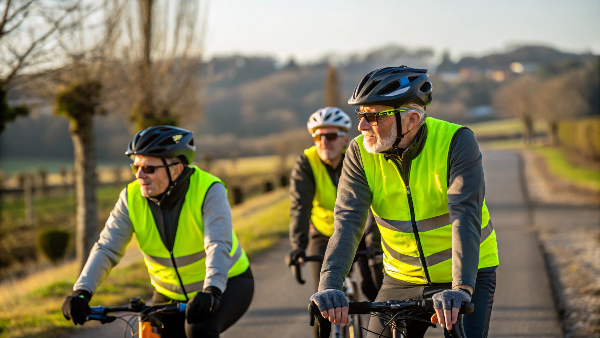
As a new rider, your first jacket is a significant purchase. You want something that keeps you safe, is comfortable, and won’t break the bank. There are a few features I always recommend beginners prioritize.
Key Features for New Riders
Focus on these aspects:
- Versatility: A jacket that can handle various conditions is ideal when you're starting out. Look for one with removable thermal and waterproof liners. This means you can adapt the jacket to warm, cold, or wet weather without needing to buy multiple jackets right away.
- Protection: This is paramount. Ensure the jacket has CE-rated armor in the elbows and shoulders. Also, make sure there's a pocket for an optional back protector – and I really suggest you get one. Don’t compromise on this.
- Comfort & Fit: If a jacket isn’t comfortable, you'll be tempted not to wear it. And that’s dangerous. Make sure you have a good range of motion, especially in the arms and shoulders, for controlling your bike.
- Visibility: Being seen by other road users is incredibly important, especially when you're still building your road sense. Bright colors or reflective panels can make a huge difference. At Vissafetywear, we specialize in high-visibility garments, and I can't stress enough how important being seen is for safety.
Material Recommendations for Beginners
Textile jackets5 are often a great starting point for new riders. They generally offer a fantastic balance of protection, weather versatility, and affordability. They also tend to be lighter than leather and require less break-in time. Look for durable materials and features like adjustable cuffs, waist, and arms to help you customize the fit.
Budget Considerations
You don't need the most expensive jacket on the market, but it's wise to avoid the cheapest options as they might compromise on safety features or material quality. Set a realistic budget and aim for the best protection and features you can get within it. Here’s a quick table:
| Feature | Importance for Beginners | Why? |
|---|---|---|
| CE Armor | High | Essential for impact protection in common fall zones. |
| Abrasion Resistance | High | Protects your skin if you slide on the pavement. |
| Good Fit | High | Ensures comfort and keeps armor correctly positioned. |
| Versatility | Medium-High | Adapts to changing weather, saves money initially. |
| Visibility | High | Crucial for being noticed by other drivers and riders. |
| Price | Medium | Balance necessary safety features with what you can afford. |
How should a riding jacket fit?
Jacket fit seems tricky, right? Too tight restricts your movement, while too loose compromises safety. Let's nail the perfect, protective fit for your rides.
A riding jacket should be snug but not uncomfortably restrictive. It must allow full arm movement, and the armor should stay securely in place. The cut should also suit your riding posture.
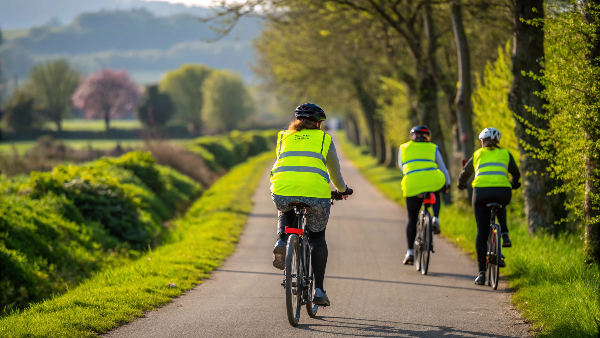
Getting the fit right is just as important as the protective features themselves. A poorly fitting jacket won't do its job correctly in an accident. I remember when I first started riding, I bought a jacket that looked cool but was too loose. The first time I nearly had a spill, I realized the elbow pads had shifted completely. That was a valuable lesson learned about proper fit!
The "Snug but Comfortable" Rule
This is the golden rule for motorcycle jacket fit.
- The jacket should feel close to your body. This ensures that if you do fall, the armor stays over the areas it’s meant to protect (elbows, shoulders, back).
- You should be able to comfortably wear your typical riding layers underneath. This might be just a t-shirt in summer, or a base layer and a thin mid-layer in cooler weather. Try the jacket on with these layers.
- Check for any excessive bunching of material or pulling when you adopt your riding position. It shouldn't feel like it's fighting you.
Checking Key Fit Points
Pay attention to these specific areas:
- Shoulders: The shoulder seams of the jacket should sit on, or very close to, your shoulder bone. If they droop down your arm, the jacket is too big. If they are hiked up towards your neck, it's too small.
- Sleeves: When you extend your arms to a riding position (mimicking holding handlebars), the sleeves should cover your wrists. They shouldn’t ride up and expose your skin. Cuffs should be snug enough to fit under or over your glove gauntlets without gaps.
- Torso Length: The jacket should cover your lower back, especially when you're leaning forward in a riding position. Many riding jackets have a "drop tail" design, meaning they are longer at the back for this reason.
- Collar: The collar should be comfortable around your neck. It shouldn't be so tight that it chokes you, nor so loose that it lets in a lot of wind or rain.
Trying it On - The Right Way
When you try on a jacket, don't just stand there.
- Wear what you'd normally wear underneath when riding.
- Most importantly, get into your typical riding posture. If you have a sports bike, you'll be leaning forward. If you have a cruiser, you'll be more upright. The fit can feel very different depending on your posture.
- Move your arms around. Reach forward, simulate turning, check if you can comfortably turn your head for shoulder checks. The jacket should allow a full range of motion without binding.
How to choose riding gear?
Gearing up for riding feels like a big task, doesn't it? Choosing all your riding gear, from helmet to boots, can be daunting. Let's simplify the process to ensure your overall safety on the road.
When choosing any riding gear, prioritize protection for key areas (head, torso, hands, feet). Ensure each item fits well, suits the weather you'll ride in, and meets recognized safety standards.
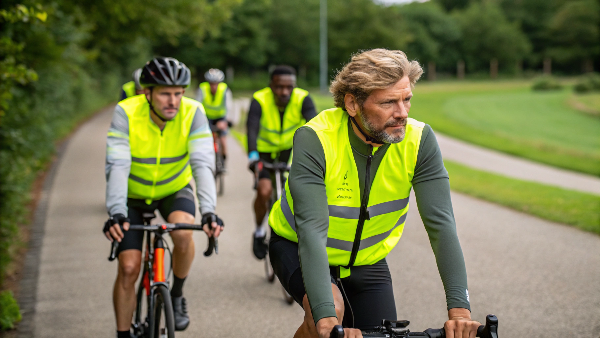
Choosing your full set of riding gear is a critical step towards safe and enjoyable motorcycling. While this article focuses on jackets, it's important to see how the jacket fits into your overall protective ensemble. Each piece of gear has a specific job.
The Hierarchy of Protection
Think of your gear as layers of safety:
- Helmet: This is non-negotiable. It protects your head, the most vital part.
- Jacket: Protects your torso, arms, and vital organs from impact and abrasion.
- Gloves: Protect your hands. In a fall, your hands often go out first.
- Pants: Riding pants protect your legs, knees, and hips.
- Boots: Proper riding boots protect your feet, ankles, and lower shins.
Key Considerations for All Gear (including jackets)
These principles apply across the board:
- Protection: Look for certified gear. For jackets and pants, this often means CE-rated armor. For helmets, look for DOT, ECE, or Snell certifications. Materials should be abrasion-resistant.
- Fit: As we've discussed for jackets, correct fit is crucial for all gear. If it's too loose, it can shift. If it's too tight, it can be restrictive and uncomfortable.
- Comfort: If your gear is uncomfortable, you'll be less likely to wear it, or it might distract you while riding.
- Visibility: This is especially important for jackets and helmets. As a manufacturer of high-visibility clothing at Vissafetywear, we see firsthand how much difference good visibility makes in preventing accidents. Even if your main gear isn't fully hi-vis, look for reflective panels or consider adding a hi-vis vest over your jacket.
Building Your Gear Set
Start with the absolute essentials and build from there.
- Begin with a quality helmet and a good riding jacket. These cover the most critical areas after your head.
- Next, add riding gloves. Then, look into dedicated riding pants and proper motorcycle boots as your budget allows.
- Don't compromise on safety for style alone, but the good news is that many modern gear options offer both excellent protection and great looks.
Here’s a quick look at gear items and their focus:
| Gear Item | Primary Protection Focus | Key Features to Look For |
|---|---|---|
| Helmet | Head impact, abrasion | DOT/ECE/Snell certification, proper fit, good field of vision |
| Jacket | Torso/arm impact & abrasion, weather protection | CE-rated armor, abrasion-resistant material, correct fit, vents |
| Gloves | Hand impact & abrasion, knuckle protection | Knuckle protection, palm sliders, good grip, secure closure |
| Pants | Leg impact & abrasion, hip protection | CE-rated armor (knees, hips), abrasion-resistant material |
| Boots | Foot/ankle impact, abrasion, crush protection, shifter protection | Strong ankle support, sturdy sole, reinforced areas |
How do I choose the right jacket?
Still a bit unsure which specific jacket is your "right" one? With so many styles available, it's easy to get lost. Let's focus on matching a jacket to your type of riding.
Choose the right jacket by carefully matching its style, features, and overall fit to your specific motorcycle type (sport, cruiser, touring, adventure) and your typical riding conditions and environment.
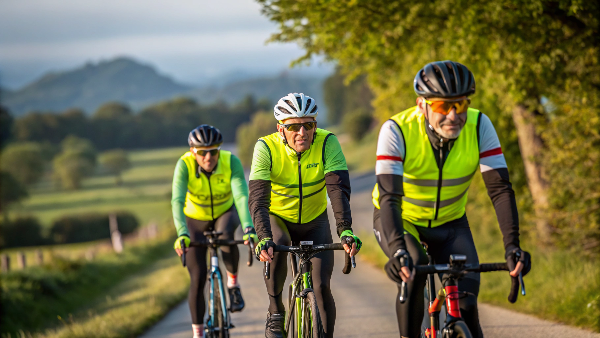
Choosing the "right" jacket goes beyond just general features; it's about finding the one that’s right for you and how you ride. The perfect jacket for a sports bike rider might not be ideal for someone on a long-distance tourer.
Matching Jacket to Motorcycle Type
Your bike’s design often dictates your riding posture, which influences jacket choice.
- Sportbike/Race Jackets: These are designed for an aggressive, forward-leaning riding position. They often feature pre-curved sleeves, a tighter aerodynamic fit, and are typically made of leather for maximum abrasion resistance.
- Cruiser Jackets: For the more relaxed, upright, or slightly leaned-back posture of a cruiser, jackets tend to have a more relaxed fit. Leather is popular for style, but many good textile options exist.
- Touring/Adventure Jackets: These are built for versatility and long-haul comfort. They suit an upright riding posture and are usually made from advanced textiles. Expect features like ample pockets, all-weather capability (waterproof and thermal liners), and robust construction. They are often longer in cut for better coverage.
- Urban/Commuter Jackets: These can sometimes be more casual in style, blending in off the bike. However, they should still offer essential protection like armor and abrasion resistance. They are great for shorter rides and daily commutes.
Considering Your Riding Environment
Where you ride most often also plays a big role.
- Urban Commuting: High visibility is key here. You'll also want some weather protection and ease of use, perhaps with easily accessible pockets for things like toll passes or a phone.
- Long-Distance Touring: Comfort over many hours is paramount. Look for features that reduce fatigue, excellent all-weather capability, and plenty of storage.
- Off-Road/Adventure Riding: Durability, good ventilation, robust protection, and possibly compatibility with hydration packs are important. The jacket needs to handle rough conditions.
- Track Riding: This demands the highest level of protection, often with specific safety certifications required by the track. Full leather suits are common.
Don't Forget Personal Preference
While safety and function come first, you also want to like your jacket.
- Style: This is subjective, but thankfully there are many styles available that don't compromise on safety.
- Color: Dark colors absorb heat and can make you very hot in summer. Lighter colors can help keep you cooler. Brighter colors or jackets with significant reflective elements significantly improve your visibility to other road users. At Vissafetywear, our high-visibility jackets are designed to maximize conspicuity, which is a huge safety factor, especially in busy urban environments or during rides in low-light conditions.
Here’s a table to help match styles:
| Riding Style | Key Jacket Features | Material Preference |
|---|---|---|
| Sport/Track | Aggressive fit, pre-curved sleeves, high abrasion resistance, CE Level 2 armor | Leather primarily |
| Cruiser | Relaxed fit, classic or modern style, good abrasion resistance | Leather or heavy-duty Textile |
| Touring/Adventure | All-weather versatility, comfort, lots of storage, good ventilation, robust build | Advanced Textile |
| Urban Commuting | Good visibility, some weather protection, casual style options, practical | Textile, Mesh, or light Leather |
How do I know my riding jacket size?
Sizing charts can be confusing, can't they? And you might be worried about ordering a jacket online only to find it doesn't fit. Let's demystify finding your perfect jacket size.
Know your riding jacket size by accurately measuring6 your chest, waist (if applicable for the cut), and arm length. Always consult the specific brand's sizing chart7, as fits vary significantly between manufacturers.
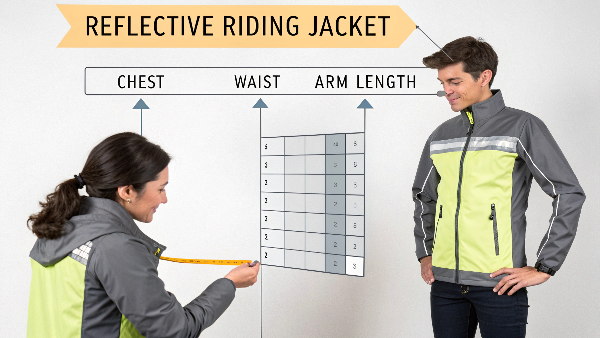
Getting the size right is crucial for both comfort and safety. A jacket that's too big won't keep its armor in place, and one that's too small will be restrictive. I've seen many clients at Vissafetywear struggle with sizing when ordering bulk custom gear, especially when they are unfamiliar with a new supplier. That's why we always recommend providing detailed body measurements. For individual purchases, the same care is needed.
Taking Your Measurements Accurately
Use a soft measuring tape for the best results.
- Chest: Measure around the fullest part of your chest, keeping the tape snug but not tight, and level all the way around. This is usually under your armpits.
- Waist: Measure around your natural waistline. For most men, this is near the belly button. For women, it's usually the narrowest part of your torso. Some jacket styles are more fitted at the waist than others.
- Arm Length: This can be tricky. Some brands measure from the center back of your neck, over the shoulder, and down to the wrist bone. Others measure from the shoulder seam down to the wrist. Check the brand's specific instructions. Having someone help you often gives a more accurate measurement.
- Hips (for longer jackets): If you're looking at a ¾ length or touring jacket, measure around the fullest part of your hips.
Understanding Sizing Charts
This is where many people get confused.
- Every Brand is Different: This is the most important thing to remember. Your size "Large" in one brand might be a "Medium" or "XL" in another. Never assume.
- Alpha vs. Numeric Sizing: Jackets come in "Alpha" sizes (S, M, L, XL) or "Numeric" European sizes (e.g., 48, 50, 52, which roughly correspond to chest circumference in cm or half-circumference) or US sizes (e.g., 38, 40, 42, often corresponding to chest in inches).
- Fit "Styles": Pay attention if a brand mentions a "European Fit" (often slimmer) versus an "American Fit" (often more relaxed or generous).
- Read Reviews: Often, other buyers will comment on whether a particular jacket or brand runs true to size, small, or large. This can be very helpful.
Tips for Online Purchases & Trying On
If you can't try it on in a store:
- Check the Return Policy: Before you buy online, make sure the seller has a good return or exchange policy in case the fit isn't right.
- When it Arrives: Try it on immediately with the layers you typically wear when riding.
- Mimic Riding Posture: Don't just stand straight. Sit on your bike if possible, or at least get into your riding stance. Check for comfort, restriction, and how the armor sits. Ensure the sleeves are long enough and the back doesn't ride up.
Should riding jacket be tight or loose?
Tight or loose – it's a common question when it comes to riding jacket fit. Does it really make a big difference for your safety? Let's settle this for your peace of mind.
A riding jacket should be snug, not uncomfortably tight, and definitely not loose. A properly snug fit is crucial because it ensures the protective armor stays in place during an impact.
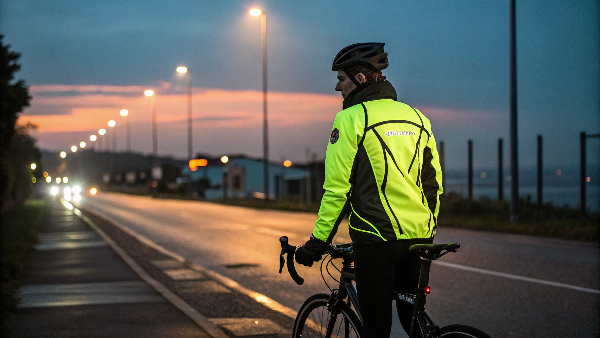
The fit of your motorcycle jacket is a critical safety feature in itself. It’s not just about how it looks or feels when you're standing around; it's about how it performs when you need it most. Think of it like this: the jacket is your second skin on the road. It needs to move with you, but also stay put if things go wrong. It's a balance we focus on a lot when designing specialized workwear at Vissafetywear too; protective gear must allow for task completion without hindrance, yet protect effectively.
Why "Snug" is Key for Safety
A snug fit directly impacts how well your jacket can protect you.
- Armor Placement: The most important reason for a snug fit is to keep the armor (elbow pads, shoulder pads, and back protector) correctly positioned over the body parts they are designed to shield. If your jacket is too loose, in the event of a fall or slide, the armor can easily shift away from these critical areas, rendering it much less effective or even useless.
- Abrasion Resistance: A jacket that fits closely to your body is less likely to catch on the road surface and tear. If it's loose, it can bunch up during a slide, potentially exposing your skin to abrasion. The material needs to stay flat against you to do its job.
- Preventing Flapping: When riding at speed, a loose jacket will flap around in the wind. This isn't just annoying; it can be very distracting and tiring over a long ride. Excessive flapping can even affect your stability and control of the motorcycle.
The Dangers of "Too Tight"
While snug is good, "too tight" is definitely bad.
- Restriction of Movement: If a jacket is overly tight, it can significantly restrict your range of motion. This can make it difficult to steer, perform shoulder checks, or react quickly and smoothly to road conditions.
- Discomfort and Fatigue: Constant pressure from a tight jacket, or areas that chafe, will make your ride unpleasant. This discomfort can lead to fatigue, which in turn reduces your concentration and awareness on the road.
- Impaired Circulation: Cuffs, collars, or armholes that are too tight can restrict blood flow, leading to numbness or tingling in your extremities. This is both uncomfortable and unsafe.
Finding the Balance
The ideal fit is a balance.
- The jacket should allow you to wear a comfortable base layer and perhaps a thin mid-layer (like a fleece) underneath without feeling like you're stuffed into it.
- You need to be able to move freely. Your arms and shoulders, in particular, should have a full range of motion for steering and control.
- Always test the fit in your typical riding position. A jacket that feels okay when you're standing up straight might become too tight across the chest or shoulders when you lean forward to reach the handlebars.
Conclusion
Choosing your new riding jacket involves balancing protection, a good fit, and overall comfort. Prioritize safety features, match the jacket to your specific needs, and enjoy your rides with confidence.
-
Understanding CE-rated armor is crucial for ensuring your safety while riding. Explore this link to learn more about its importance and standards. ↩
-
Choosing a waterproof jacket can enhance your riding experience in wet conditions. Check out this resource for top recommendations and features. ↩
-
Abrasion resistance is vital for your safety on the road. Discover how it impacts your choice of riding jacket and why it matters. ↩
-
Visibility can significantly enhance your safety on the road. Discover why it matters and how to choose a jacket that keeps you seen. ↩
-
Textile jackets offer a great balance of protection and comfort for beginners. Learn more about their advantages and features here. ↩
-
Accurate measurements are key to a perfect fit. This resource will guide you through the measuring process to avoid sizing issues. ↩
-
Understanding sizing charts is crucial for finding the right fit. Explore this resource to ensure you make informed decisions when purchasing your riding jacket. ↩

